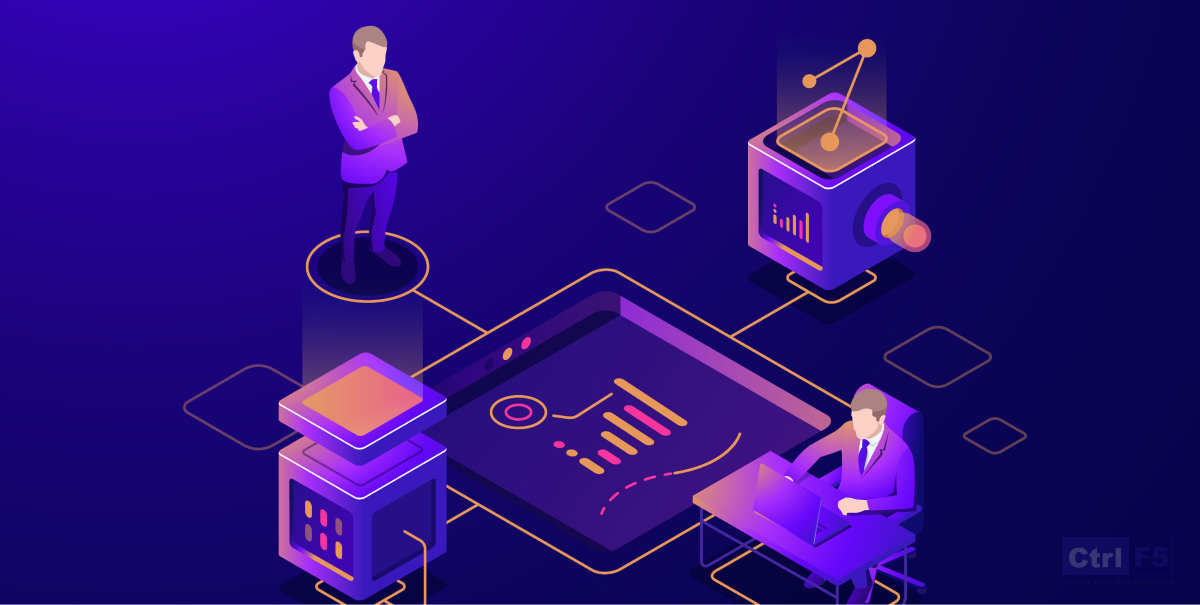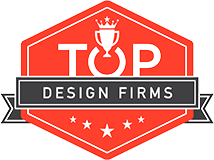How to Develop an AI-powered SaaS Product in 6 Steps
- Anurag Pandey
- Last updated on May 20, 2024
- Artificial intelligence, SaaS
- 10 minutes read
Table of Contents
ToggleAI has become a strong buzzword in the commercial sector and for good reason. SaaS as a software delivery model and AI as a technology for enhancing software product capabilities work well together. SaaS organizations, in particular, can benefit greatly from adopting AI capabilities.
According to IBM, 28% of organizations had an AI deployment strategy in place by 2024, with 37% working on it. Given that 70% of software was delivered as SaaS solutions in the same year, we may conclude that the SaaS market for AI-powered mobile apps is getting increasingly competitive.
If you intend to develop your own SaaS product, you should carefully consider the necessity for AI implementation. To successfully install the technology, you must be informed of the measures to take.
AI has several commercial advantages. However, until recently, only huge corporations with extensive engineering resources had access to AI. These resources allowed them to create AI-based software from scratch. As demand for AI grows, small firms want to take advantage of its benefits. To accomplish this, they look for SaaS companies that provide low-cost AI services, eliminating the need to hire a full machine learning engineering team. And, because mainstream AI adoption is still in its early stages, there are huge prospects for anyone who can match the need. Some of the top examples of SaaS products are Office 365 for mailing, Slack for messaging, Dropbox for storage, Jira for project management tools, salesforce and HubSpot for CRM software, and Shopify for an eCommerce app.
If you are an entrepreneur looking to establish your own SaaS AI product, you have an excellent opportunity to enter the not-so-competitive industry of AI service providers and achieve success that you may not have anticipated. This article provides a step-by-step guide for building a SaaS artificial intelligence product.
What Exactly Is an AI SaaS (AIaaS)?
Artificial Intelligence as a Service, or AI SaaS, is revolutionizing how consumers may access and use AI technologies. It blends the scalability and flexibility of the Software as a Service (SaaS) model with the power of artificial intelligence. AI SaaS solutions deliver AI functionality and services via cloud-based software, making advanced AI capabilities available to a large audience through subscription-based models. This design is based on the fundamental themes of scalability, affordability, accessibility, and personalization. It democratizes AI use and adapts it to a wide range of specialized use cases, allowing companies of all sizes to benefit from AI without incurring significant initial costs and expertise.
AI has a revolutionary impact on the SaaS market. It enhances automation, streamlines workflows, provides more in-depth insights, and personalizes user experiences in SaaS applications. AI-powered SaaS solutions offer predictive capabilities to help with forecasting and decision-making, offering firms a competitive advantage in data-driven decision-making. AI SaaS is leading in a new era of digital innovation and efficiency, combining the best of both worlds: SaaS’s effectiveness and accessibility with AI’s revolutionary ability.
Six steps to develop an AI-powered SaaS product
Each project’s budget and timeframe are unique because the amount of investment, time, talent, and effort required varies based on the duties and complexity of a SaaS solution. The scope of work varies depending on the exact features and functionalities necessary for execution.
However, some processes are applicable to any SaaS project, including AI-powered ones, and you can utilize the example below for software product development.
1. Planning and ideation
The first stage of any successful project is planning and brainstorming. Have you ever tried to create something without a blueprint? It’s similar to sailing without a compass; you might make progress, but you’ll most likely get lost at sea. Discover your target market’s needs, pain spots, and preferences. Also, research your competitors to learn what they provide and how you may differentiate your SaaS service.
When brainstorming ideas for an AI-powered SaaS solution, the first question that should come to mind is:
What problem does this product intend to solve? Understanding the problem is half of the solution. Consider market demands, prospective rivals, and, most crucially, the distinct value your solution brings to the table.
2. Consider what features are needed to develop your SaaS application
Based on your market research, decide which features and functionalities are most important to your target market and will be required for your SaaS application to succeed. Prioritize the features and functionality you’ve identified in terms of their relevance to your target market and potential impact on the success of your SaaS service.
The features and functionality that can be added to a SaaS application are based on the application and the target market’s requirements. Some popular characteristics and capabilities that can be added to a SaaS application are:
- User authentication and access control
- Data storage and management
- Data analysis and reporting
- Collaboration and communication
- Automation
- Integration and
- Auto-scaling
3. Seek a SaaS app development company to design and develop the MVP
Create a product when you’ve come up with a feature list. A minimal viable product (MVP) is an essential phase in designing a SaaS application. Working with a reputable app development company is one way to create an MVP.
The objective for adopting the MVP version of the software is to obtain important input from early users and subsequently improve it. You can get early feedback on your SaaS app by creating an MVP version. Once you have confirmed your requirements, MVP app development business will use Adobe XD to create the UX/UI designs of your SaaS application.
Working with a SaaS development company in India can help you create a high-quality MVP in a timely and efficient manner. A competent and experienced SaaS app development company will have the knowledge and resources to help you turn your idea into a functional product, as well as continuing support and maintenance to help you continuously improve and enhance your MVP.
4. Iterate the MVP Based on the Feedback
Iterating your MVP based on user feedback is an important step in the development process. It’s vital to remember that the MVP is a work in progress and that you should constantly gather feedback and iterate on it. This will allow you to ensure that the MVP meets the needs of your target market and that there is a market for it before devoting a significant amount of time and money to development.
So, when creating an MVP development, prioritize core functionalities. Polish it, test it, and then distribute it to a chosen group. Collect feedback, repeat it, and refine it.
5. Testing of your SaaS Product
Test the SaaS product continuously. Testing your SaaS product is a critical step in the development process since it helps you to identify and fix any problems before launching. The QA team will run a variety of tests, including usability, performance, and security testing, to guarantee that your SaaS software is bug-free and performs smoothly across several platforms.
Remember that testing is an ongoing process, and you should continue to gather input and enhance your SaaS product even after it has been launched to ensure it continues to satisfy the demands of your target market.
6. Deploying of Your SaaS Application
Deploying a SaaS app is the process of making it available to users and accessible from anywhere using the internet. Once the application has been created, it is ready for deployment by finishing the code, setting the cloud environment, and testing for defects and issues. SaaS Developers will also create and test backup and disaster recovery strategies to ensure that the data and application are safe in the event of an unforeseen event.
Developers will install your app based on the sort of SaaS product you selected. Here are the five major forms of deployment.
- Cloud-based SaaS app deployment
- On-premises deployment
- Hybrid deployment
- Private cloud deployment
- App Store and Play Store Deployment
Deploying a SaaS platform can be a complex process, but understanding deployment can help you ensure that your service runs well and is available to consumers as soon as feasible.
To avoid surprising problems work with skilled people during the deployment process. Continuous monitoring and maintenance of the deployed application guarantees that it remains secure, scalable, and available to users. This involves providing frequent updates and patches, monitoring performance, and resolving any issues that arise.
How Much Does it Cost to Develop an AI-powered SaaS Product?
SaaS product development costs can range from $40,000 to $200,000, however, they may exceed this range. (Please remember that this is just an estimate and may change depending on your SaaS development requirements.)
The time and cost of creating the greatest SaaS products may differ depending on the features, size, developers’ expertise, and experience. The reason for such a large discrepancy between the lower and upper bounds is the variety of elements that can influence the cost of SaaS development.
For additional information, contact ControlF5 the top SaaS development company in India, and get the perfect idea of the cost of making your SaaS product.
Here are some key factors that can impact the cost:
- Team Size: Larger teams may be necessary for difficult projects or to speed up development. However, a larger team incurs higher resource expenditures.
- SaaS Product Complexity: If the product has extensive functionality, intricate business logic, or integration with many systems, it may take more time and effort to design, resulting in increased prices.
- Technological Architecture: Certain architectures may necessitate specific expertise or infrastructure, which can raise development costs. Furthermore, licensing fees for specific technologies or frameworks might increase the overall cost of SaaS product development.
Tips for Creating an AI SaaS Platform
- Data Quality Matters: Your data quality is of the highest priority. Make sure the data you have is reflective of the issue you are trying to solve, accurate, and tidy. Robust AI algorithms are built on top of high-quality data.
- Repeat and Refine: The secret is iterative development. Gather customer feedback while designing a minimum viable product development (MVP). Use these tips to continuously improve the features and functionality of your AI SaaS service.
- Build a Strong Feedback Loop: Provide clear channels for user feedback and listen to what your customers have to say. Consider their advice while designing new items to solve challenges and respond to changing market demands.
- Monitor and Optimize Performance: Always monitor the operation of your AI algorithms. Determine any defects, bottlenecks, or suboptimal outputs, and then work to enhance the accuracy and efficiency of your algorithms.
- Consider Ethical Implications: While developing AI, ethical concerns must be addressed. Pay close attention to user consent, transparency, fairness, and biases. Aim to provide AI SaaS solutions that are moral, practical, and effective.
- Stay Agile: Implement agile development approaches. To make changes gradually, break your project into manageable tasks and work in a rush. This agility enables you to respond to changing demands and market situations.
- Use generative AI: Use generative AI to innovate your SaaS platform, enabling dynamic content generation based on user needs. Employ deep learning algorithms to improve the user experience by providing personalized recommendations and predictive insights. Use neural networks to constantly enhance and optimize the platform’s functioning, ensuring adaptability and scalability in addressing changing market demands.
Conclusion: How to develop an AI-powered SaaS product
Merging AI and SaaS provides AI SaaS companies with unmatched benefits, ranging from automation to predictive analytics. The transition from an initial concept to a scalable solution necessitates meticulous preparation and a user-centric strategy. As the digital exterior advances, AI-powered SaaS products are at the forefront, setting new standards for innovation and efficiency.
It is usually beneficial to begin this process by seeking guidance and support from experts in the field, such as us. If you want to learn more about AI SaaS product development, our team of specialists is here to help. We can help you navigate the subtleties and complexities of this interesting and rapidly evolving business owing to our deep knowledge and experience.
Contact us and our team if you need personalized guidance and insights for your specific project.
Anurag Pandey
Recent Posts
Categories
Hire Developers
About us
Popular Posts
Tags
Related Articles
SaaS Tools for Business Growth: Six Essentials You Must Have
Did you know that the majority of companies employ SaaS solutions? This is because SaaS products offer an inexpensive, scalable, and adaptable approach to optimize procedures, boost productivity, and gain a competitive advantage. Users can become experts in all crafts.
6 Mobile App Development Frameworks For 2024!
Mobile App Development Frameworks are software development kits (SDKs) used to create mobile applications. You can either utilize a pre-built framework or create your own custom one. It enables developers to construct applications with less code and greater efficiency.
How LLMs Are Transforming AI Apps: Here’s a full guide
Artificial intelligence represents the most significant paradigm shift since the internet’s inception in 1994. And, understandably, many firms are trying to incorporate AI into their business practices.
Sign up for our Newsletter











